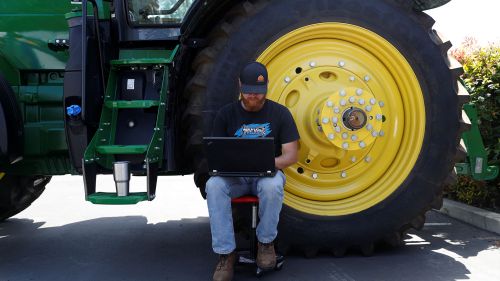Agriculture Needs a New Public Digital Architecture

Big data can be an asset in the fight against hunger, but it needs a public digital architecture.
What image comes to mind when you hear the phrase "public goods" within the context of agriculture and food? Perhaps you think of the public goods that agriculture affects, like the land stewardship or clean water. Perhaps you think of the public goods generated by the CGIAR in the form of useful traits and varieties. Or you may even think of the datasets that are in the public domain like rainfall, land records, soil maps, or livestock disease outbreaks, helping to improve agricultural policy and the private sector services. All of these, and many more examples are critical to the functioning of the agriculture and food system. But there is a critical new public good being built that requires deliberate and urgent attention: the digital architecture that will allow us to use the immense data we’ve amassed to solve the most pressing issues facing us.
A Collaborative Approach for Public Good
The immense explosion of private enterprise investment in agriculture and food might lead some to believe that public investment may not be required. However, many of these same companies are also invested in the development of protocols, principles, and platforms that will enable a more efficient food system. Free and open-source software (FOSS) is the backbone of the internet itself, and forms the basis of many common processes and actions we use everyday, from financial services to government to healthcare. But to thrive and accelerate problem solving across the food system, these tools require not only investment in the technology but deliberation and alignment of stakeholders around the norms and principles that should govern the data ecosystem. Thankfully, the UN Food Systems Summit process has offered one such venue to gain alignment around both the vision and principles that could anchor and fuel greater equity and resilience in the food system to come.
The Food Systems Summit was held this week, which is the culmination of nearly two years of preparatory dialogues and planning across the globe. Four "Levers for Change" were identified through the highly collaborative Summit approach, each chosen for their ability to contribute to wide-ranging positive benefits beyond their immediate focus. Digital Green was privileged to participate in several dialogues within the Innovation Lever and, in particular, to be part of a working group made up of FAO, CGIAR Big Data Platform, Hewlett Packard Enterprise, the World Bank, Google X’s Mineral Project, the World Economic Forum, and GeoGlam, which is now advocating for an idea titled OneMap. The premise of OneMap is that in order to unlock the power of large-scale data analytics to solve problems in agriculture and food, we need new mechanisms for rebuilding trust and preserving individual agency in digital systems, which have suffered an erosion of the public trust in the last decade. Without systems that address this, we will not see the kinds of collaboration and exchange of data required to rise to the severe challenges facing farmers and facing all of us, collectively.
A Data Wallet for Digital Assets
Digital Green and the OneMap group envision a farmer data wallet as the foundation of this new architecture. With this wallet, accessible via mobile phone, farmers can see and manage data they’ve collected or data collected about them, and, importantly, they can give consent for its use. Data is valuable and farmers, just like any other group, need a means to manage this asset to their benefit. But data in isolation is not as valuable as in aggregate. A "confidential compute" layer is needed to aggregate farmer data in alignment with their wishes so that artificial intelligence (AI) models can help the whole system anticipate and act swiftly on challenges like climactic shocks or emergent pests.
With commitment to preserving digital agency we also need common data standards, norms, and governance architectures to enable a truly interoperable global system. National governments have already taken bold steps, as we have seen during the Summit, but the interconnected nature of the food system requires us all. With this in place, a healthy ecosystem of services and providers can rise to meet the unique and local needs of farmers with the precision and customization they deserve so that they can continue to supply the world’s food needs.
Finding Support for Digital Architecture
As the Summit approached, the OneMap group found that other digitally-oriented groups within the Innovation Lever sensed similar urgency to chart a common course grounded principles like respecting the agency of individual data owners while iterating quickly and sharing learning widely. It is time to establish a consortium that can champion the cause of the public digital architecture for the food system. As climate change worsens and inequity continues to rise, we must act now with common purpose to deliberately build the public goods digital infrastructure that will enable agility without sacrificing current or future agency of individuals.
This group is beginning to take shape as a Global Coalition for Digital Food Systems Innovation as the Summit moves into implementation. We plan to draw attention to our shared values, shine a light on exemplar initiatives leading the way, and invite others to join us in common purpose and action. As that work presses forward and takes shape, Digital Green also invites the public to explore FarmStack, a protocol developed for data exchange that ensures consent and protection of data using peer to peer connectors without any third party actor. Architecture which protects agency and builds trust is what we need to power and protect our food system. We are eager to learn and build alongside other likeminded actors like those forming this new Coalition and look forward to building awareness and support for digital public goods for agriculture in the years ahead.

